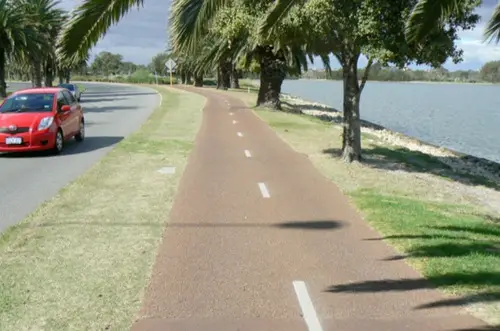Melbourne – the capital city of the Australian state of Victoria – is working to ensure it can reach its full potential as a vibrant cycling city. Over the past decade, Melbourne and Victoria have established a substantial transport network with painted cycle lanes, wide kerbside lanes and off-road cycle paths.

It is reported that new infrastructure has encouraged many to cycle on-road to and from work and for many other trips.

Bicycle Victoria – the organisation which encourages cycle use in the state – believes that attracting more people to cycle requires improved levels of infrastructure.

The construction of the first separated on-road lane was completed on Swanston Street, between Melbourne University and city centre, in July 2007. The City of Melbourne is now pushing for the construction of more ‘European Style Cycleways’ in Melbourne.


Bicycle lanes alongside the road are marked with green ”vibra” lines, which causes vehicles to vibrate when they stray into the bicycle lane.

Yarra, an inner Melbourne municipality 5km from the CBD, has a fine-grained cycle network and densely developed urban form. The above image shows a shared space between pedestrians and cyclists passing through one of the city’s parks.

Yarra has the highest level of non-car use for travel to work in Melbourne with a 6.9% cycle to work mode share. 37% of commuter cyclists are female.

But some would say Melbourne is more famous for its laneways than it’s cycleways, with ‘Lose Yourself in Melbourne Laneways’ being one of Victoria’s tourism slogans. These laneways are narrow enclaves where mainstream culture takes a back seat to allow for one-off boutiques, unique galleries, tiny cafe?s and hidden bars

The city has more than 180 tiny laneways, one of which is home to Melbourne’s smallest cafe?. Integral to the culture of the city, you would struggle to fit a bicycle lane down Melbourne’s laneways!


